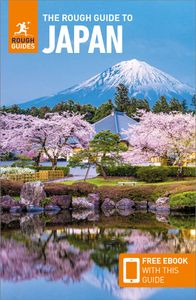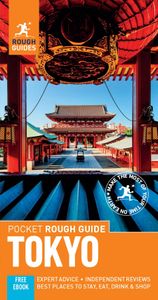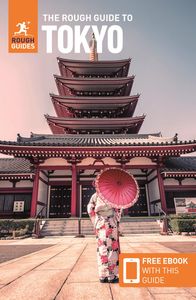Brief history
Kōbe’s history is dominated by two important events; the opening of Japan’s ports to foreign trade in 1868 and the Great Hanshin Earthquake of 1995. Although it had been a port as long ago as the eighth century AD, Kōbe’s fortunes really took off when foreign traders set up shop in the city in the latter part of the nineteenth century, bringing their new ways and styles of living with them. Japan got its first taste of beef and football in 1871 in Kōbe, the first cinema film was shown here in 1896, and the first golf course was laid down close to the city in 1903, designed by Arthur Gloom, a Brit.
This trendsetting nature and booming trade made Kōbe a very popular place and, despite suffering heavy bombing during World War II, by the 1960s the city was bursting out of its narrow stretch of land between the mountains and the sea. A solution was found by levelling the hills and dumping the rubble in the sea to create Port Island and Rokkō Island in the bay. All this came to a sudden halt, though, at 5.46am, January 17, 1995, when a devastating earthquake struck the city and surrounding area. As dawn broke, Kōbe resembled a war zone, with buildings and highways toppled, whole neighbourhoods in flames, some 5500 people dead and tens of thousands homeless. While the authorities were criticized for not responding promptly to the disaster, Kōbe has recovered well and today the city bears little physical sign of the tragedy.
Nonetheless, a lingering recession still affects the city, and economic growth is somewhat stalled. The primary source of angst for many of the city’s residents is Kōbe Airport, which opened in 2006 on a man-made island off the coast. The airport only handles domestic flights, and with two perfectly good airports already in service within an hour of the city centre, it has failed to spark increased prosperity.
Arima Onsen
On the northern slopes of Rokkō-san, northeast of Kōbe, is one of Japan’s oldest hot-spring resorts, ARIMA ONSEN (有馬温泉). Since the seventh century AD, Arima has been famous for attracting emperors, shoguns and, in more modern times, the literati, all of whom have come to bathe in its gold and silver waters. It’s even mentioned in the ancient chronicle the Nihonshoki. Hideyoshi Toyotomi brought the tea master Sen no Rikyu here in the sixteenth century to perform a tea ceremony, an event commemorated annually in November with the Arima Great Tea Ceremony. Arima has two kinds of mineral-rich hot springs, both recognized for their health benefits – the sludgy brown ginsen (gold spring) and the clear kinsen (silver spring) waters are believed to be effective for curing everything from rheumatism to high blood pressure, as well as improving appetite.
There are some top-class ryokan in Arima, where you can soak yourself in luxury on an overnight trip. However, if you can only visit Arima by day, you should take a dip in the public baths. The Kin no Yu public bath (金の湯) is five minutes’ walk uphill from the train station, close to the bus station and tourist information office. Here you can relax in the kinsen waters, at the source, in a modern bathhouse. Outside there is a free footbath area, as well as a fountain of drinkable spa water. Heading up the Negai-zaka slope, lined with lots of small wooden ryokan and shops selling local crafts, you’ll find the Gin no Yu public bath (銀の湯) at the top, just past Nenbutsu-ji temple. Gin no Yu is much quieter than Kin no Yu and has a high ceiling with skylights; the light streaming in through the mist is mesmerizing. For more than double the price, it is also possible to visit the spas of some of Arima’s ryokan and hotels, but opening days and times depend on the season. Check at the tourist information office to find out which private spas you can enter.
Himeji
Of Japan’s twelve surviving feudal-era fortresses, by far the most impressive is the one in HIMEJI (姫路), 55km west of Kōbe. The fortress, Himeji-jō, made the memorable backdrop to the Bond adventure You Only Live Twice, as well as countless feudal-era dramas and the Tom Cruise film, The Last Samurai, part of which was also filmed here and around the city. The splendid gabled donjons of Himeji-jō – also known as Shirasagi-jō, or “white egret castle”, since the complex is supposed to resemble the shape of the bird in flight – miraculously survived the World War II bombings that laid waste to much of the city, and in 1993 it was added to UNESCO’s World Heritage list.
Major renovation work is currently taking place at Himeji-jō on the central donjon, and isn’t due for completion until sometime in 2016. During this period, visitors will still be able to enter the castle, and also inspect the repair process from inside protective scaffolding that will cover the donjon. While here, it’s worth visiting the beautiful Himeji Kōko-en, nine linked traditional-style gardens, and there’s also a couple of intriguing museums around the fortress walls.
Kobe beef
Kōbe’s long history of international exchange has given it a reputation for having the best Western-style and ethnic cuisine restaurants, all aimed at Japanese palates. Despite the density of restaurants catering to Chinese and Indian cuisine, it can be difficult to find a good curry or authentic dim sum. The most cosmopolitan dining area is between Sannomiya Station and Kitano-zaka, where you can also find the local delicacy, Kōbe beef – expensive slices of meat heavily marbled with fat. While Kōbe doesn’t have as strong a club scene as neighbouring Ōsaka, it does have a good range of bars, most clustered around Sannomiya and Motomachi, and all within easy walking distance of each other. There are also several cinemas around Sannomiya.






















